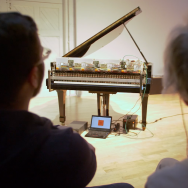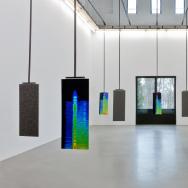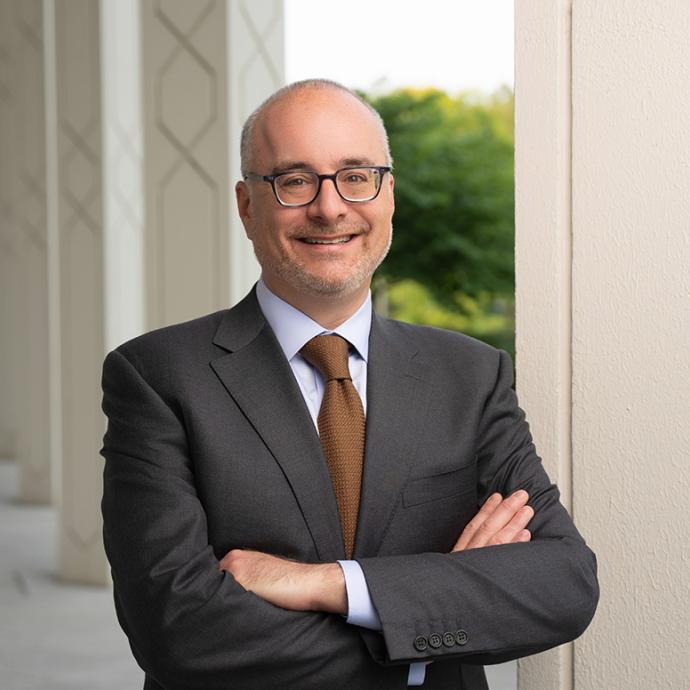In 2016, artists Amber Ginsburg and Sara Black harvested a tanoak tree on the California coast that was dying from sudden oak death, a disease caused by an accidentally introduced pathogen. After drying the tree in a high-temperature kiln to remove any trace of the pathogen, they gave it new life by turning it into 7,000 handmade pencils: works of art that could be used to produce more art.
Those pencils are now part of “On Drawing Drawing On,” a new exhibition at the University of Chicago’s Gray Center for Arts and Inquiry. Running through March 13 in the Logan Center Gallery, the exhibition celebrates the 10th anniversary of the Gray Center’s signature initiative: the Mellon Collaborative Fellowship in Arts Practice and Scholarship.
“The show is a riff on the double meaning of drawing,” said Seth Brodsky, director of the Gray Center. “It obviously designates the act of creating art with pencil and paper. But it also involves pulling, dragging, drawing out, selecting too. It speaks to the way Gray Center fellows select each other, draw from and on each other, find things in each other’s work neither knew was there in the first place.”
Brodsky continued: “What’s nice is how the two meanings converge here pretty directly. These fellowships are all, in one way or another, sketchy, freehand, drawing out a search for larger forms not available in advance. Also a kind of well-work, hauling up various unknowns from the dark.”
Displaying a variety of sketches, cartoons, sculptures and other media, the exhibition echoes the mission of the Gray Center’s Mellon fellowships, which bring together scholars and artists for multidisciplinary exploration. The show includes contributions from some of the most renowned creative minds on the UChicago faculty—including Theaster Gates, Pope.L, Jessica Stockholder and Augusta Read Thomas—as well as a slew of award-winning artists who have been drawn to the Gray Center’s spirit of collaboration over the past decade.
These projects can become an unexpected bridge between different disciplines. What happens, for example, when an illustrator works with doctors on a project examining the consequences of difference and distrust between patients and caregivers?
UChicago physicians Monica Peek and Elizabeth Tung explore those overlaps in “Common Place,” a series of patient portraits they developed with artist Julia Kuo. Accompanied by interviews, the images investigate structural racism through the lens of COVID-19.
“I have always been interested in narrative storytelling as a way of sharing patients’ lived experiences,” said Peek, a professor of medicine who focuses on reducing health care disparities. “This collaboration allowed me to see how the visual arts and narrative storytelling together are a much more compelling and powerful venue for doing this work.”
In their project, Kuo, Peek and Tung investigated the challenges faced by Black mothers. Their contribution to the exhibition is a portrait of Candace Mason, who delivered her son in Chicago during the first wave of COVID-19 and was the first interviewee for the project. Coincidentally, Tung herself gave birth to her own child around the same time.












 —Prof. Kunle Odunsi
—Prof. Kunle Odunsi
